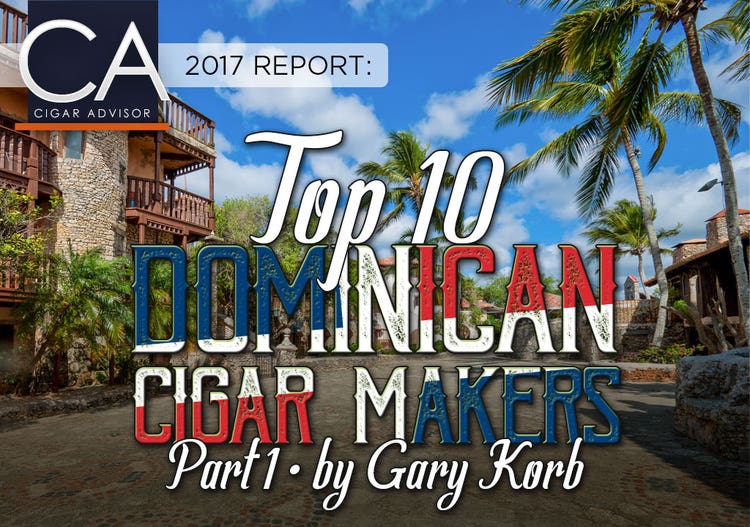
2017 CA Report: Top Dominican Cigar Makers – Part 1
Top Dominican Cigar Makers, Part 1 – The Big Factories
By Gary Korb
Introduction
For this report I’ve chosen to focus on the family-based operations, rather than the corporate giants like Altadis U.S.A. and General Cigar who, no doubt, produce a lot of great Dominican-made, Cuban heritage cigars like Montecristo, Partagás, and Cohiba, to name a few. Here in Part One, the spotlight will shine on the larger Dominican cigar makers and their factories, while Part Two will concentrate on the smaller, boutique factories. For each company I’ve included some historical background and one signature cigar which, in my opinion, best represents the brand as a whole.
~ G.K.
* * *
No other Central American country produces more cigars than the Dominican Republic. For one, the island nation, which shares its landmass with neighboring Haiti, is home to the Cibao Valley, one of the best locales on Earth for growing cigar tobacco. Secondly, the DR became the new home to many expatriate Cuban cigar-making families after the Cuban Revolution of 1959. And when you combine ideal soil and weather conditions with people who have had outstanding skills in growing, curing and rolling tobacco for generations, you’ve got the perfect ingredients for creating the world’s best handmade cigars.
Tabacalera La Aurora
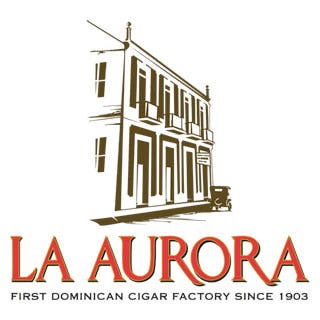
La Aurora was founded on October 3rd, 1903 by 18-year-old Eduardo León Jimenes, the ambitious grandson of skilled tobacco growers. Starting with some tareas of land he inherited from his family, a roster of six employees, and a lot of hard work, Eduardo began to build his little cigar making business, which became the seed company for what is today the Dominican Republic’s largest corporation, the E. León Jimenes Group.
In 1912, Eduardo moved the factory to Santiago de los Caballeros. As demand for his cigars soared, so did the business, and by 1914 the cigars were identified by red and gold bands with the Spanish coat of arms. It wasn’t until 1926 that the now famous lion image appeared on the bands with the words “E.LEON” in gold on a red background, and would become the most recognized symbol of the brand.
Today, Tabacalera La Aurora is headed by Guillermo León Herbert, and remains the leading cigar factory in the national Dominican market with more than a thousand employees and a presence on five continents. Eduardo would be very proud.
The Cigar: La Aurora Preferidos Corojo No.2 (5″ x 54)
Even with all of the fine cigars made today by La Aurora, the La Aurora Preferidos Corojo cigar remains the most iconic symbol of this seminal Dominican cigar brand. For one, it’s the first cigar Eduardo León made back in 1903. Secondly, the Corojo is a Dominican puro. Deftly handcrafted in the “Perfecto” format, today this double figurado shape is still made in very limited production – only 100 per day – by the factory’s top torcedors. Full-bodied, spicy, well-balanced, and reminiscent of the great cigars of old, the Preferidos line was officially re-introduced in 2003 to celebrate La Aurora’s centennial. To smoke it is a truly historical and extremely satisfying experience.
Fuente y Cia
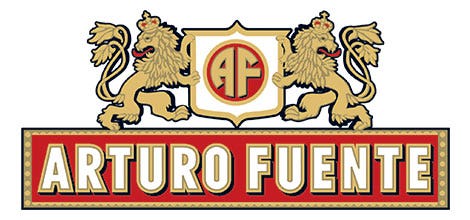
Today A. Fuente y Cia is run by third generation, Carlos “Carlito” P. Fuente, who, with his father, Carlos Sr., transformed the company into one of the world’s most iconic cigar brands, and purchased the land for their Chateau de la Fuente estate farm in the Dominican Republic. After moving operations to the D.R., Carlito marked two significant achievements: The creation of the Fuente Fuente Opus X cigar selection in 1995, the first Dominican puro and the world’s most sought-after premium cigars – even more so than many Cuban cigars. Then, in 2001 he established the Cigar Family Charitable Foundation, which today serves over 5,000 families in the D.R., and boasts a 23-acre campus with a K-12 school, medical and dental facilities, a community kitchen, an organic farm, a local fishery, and sports facilities.
The Cigar: Arturo Fuente Don Carlos Double Robusto (5¾” x 52)
Before Carlito took over the reins, his late father, Don Carlos Fuente Sr., was the former owner and Chairman of the Fuente companies, and the Don Carlos Double Robusto stands as the truest testament to his family’s worldwide success. Released in 1985, Don Carlos created this selection using vintage tobaccos that were hand selected and aged at least 10 years before rolling into flawless African Cameroon wrappers. All these many years later, this family of Dominican cigar makers continues to craft these cigars in limited quantity, exactly as Don Carlos did. The smoke is nothing short of exquisite; rich, creamy, complex, aromatic, brimming with caramelized flavors of cedar and spice in perfect balance, and a must for every avid cigar smoker.
Gurkha
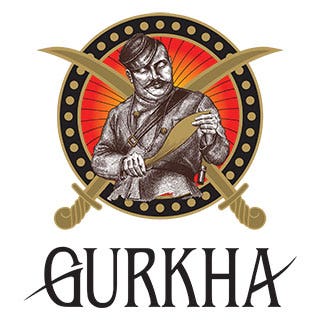
Raised in Hong Kong and London, Hansotia was the son of a wealthy Indian maker of luxury timepieces. In 1988, while vacationing in the Goa beach resort of India, he met a Portuguese man who was rolling “Gurkha” cigars. So impressed by the craftsmanship and flavor, he bought the man’s entire tobacco and cigar inventory for $143 with the idea of sending the cigars as gifts to his friends and clients. The cigars were so well received, Hansotia began getting requests for more. And so began his venture into making premium handmade cigars of outstanding quality with help from Charlie Toraño of Carlos Toraño cigars, who agreed to roll the first Gurkhas.
Starting in the late 1980s, Gurkha cigars were an all-luxury line that included the now-famous HMR (His Majesty’s Reserve) selection. Made with a dark, 15-year-aged Dominican wrapper that covers a diverse, secret, 12-year-aged blend of filler tobaccos infused with an entire bottle of Louis XIII Cognac, today it remains the world’s most expensive cigar at $750 apiece.
The only drawback was, just about every Gurkha cigar was too pricey for the average cigar smoker. So, with the advent of the mid-1990s cigar boom, Gurkha changed its tune and began adding high-quality cigars at more affordable prices.
The Cigar: Gurkha 125th Anniversary Robusto (5″ x 52)
The Gurkha 125th Anniversary cigar boasts a perfectly-balanced blend of high-priming Dominican, Nicaraguan and Brazilian long-fillers seamlessly rolled in a dark, oily, and rich-tasting Brazilian Habano wrapper. Brimming with notes of sweet cedar, roasted coffee, nuts and spice, it’s no wonder this full-flavored beauty scored a “Classic” 94-points.
Davidoff
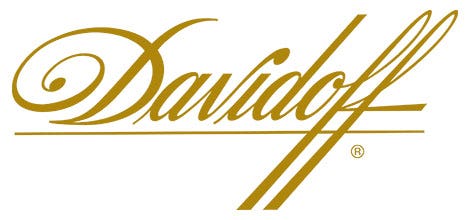
Zino Davidoff actually came from very humble beginnings in a tiny Russian village just north of Kiev. His father, a tobacconist who specialized in making fine Turkish cigarettes, moved the family out of Russia in 1911 to avoid the deadly pogroms that haunted Russia’s Jewish communities. Many years later, working in his father’s little tobacco shop in Basel, Switzerland, it was Zino who envisioned a profitable future in selling handmade cigars imported from Cuba. His firsthand knowledge of tobacco, knack for treating his customers with respect, and flair for opulence, were part and parcel of what would later become the world’s finest handmade cigars. Zino also created the model for today’s retail cigar stores, invented the cigar humidor and the double-blade cigar cutter, and changed the way cigars were packaged. It is the sum of those things, along with Zino’s impeccable reputation and dedication to high standards that have made Davidoff cigars symbolic of “the good life.”
The Cigar: Davidoff Aniversario No.3 (6″ x 50)
The Davidoff Aniversario No.3, is a medium-bodied Toro that captures every tenet of the Davidoff criteria: Peerless construction, perfect draw, rich flavor, excellent balance, and a seductive aroma. It also reminds me of some of the best Cuban cigars I’ve smoked, and for that matter, I can only imagine that this cigar is reminiscent of the early Cuban Davidoffs. Its all-Dominican core is capped by a flawless Ecuadorian Connecticut wrapper, and once lit, issues rich notes of cedar with light traces of spice, and some earthiness, laced throughout by a sweet ribbon of honey. In short, it is the quintessential Davidoff cigar.
Quesada
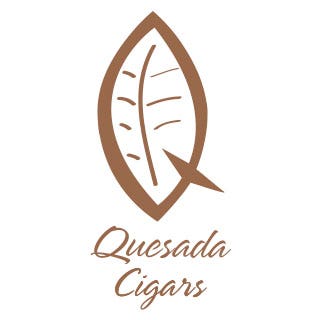
By 1960, the Cuban Revolution forced the Quesada family to make the D.R. their new homeland. Manuel’s son, Manolo Quesada, who today oversees all company operations, was 13 at the time. A new brokerage company was established in 1961 under the name Manipuladora de Tobaco, and after completing high school, Manolo joined the business.
Over the years, Manolo’s passion for the tobacco business inspired him to add his name to what was a small, select list of Dominican cigar makers – and by the 1970s he found a partner in Juan Sosa, a Miami-based cigar maker and distributor of Antillian Cigars. The new company was founded in 1974 under the name MATASA (Manufactura de Tabacos, S.A), and started, as the Quesadas put it, “as a small operation with $100, a chair, a phone, and three rollers.” Things moved quickly. More rollers were hired and the company began producing both Sosa Cigars and the non-Cuban Fonseca cigars.
The Cigar-Boom ’90s took a heavy toll on the company. Over 100 new cigar factories opened in the D.R. during that period, resulting in short supplies of tobacco, bands, cellophane, and other materials, but the Quesadas prevailed on the strength of their catalog.
During the early 2000s, Manolo Quesada built a new management team that today includes his two daughters, Patricia and Raquel, and other family members. The company continued to make Fonseca, as well as Cubita cigars, and in 2008 introduced the critically-acclaimed Casa Magna cigars line.
Marking the Quesadas’ 40 years in business, in 2014 the company was officially renamed Quesada Cigars and released the Quesada 40th Anniversary cigar selection. More recently, one of the company’s most ambitious projects was the Heisenberg by Quesada cigars line, which offers no blend information; the idea being that cigar smokers should enjoy them with “no preconceived notions” about what to expect.
Quesada Cigars is also the chief sponsor of the Procigar Festival held annually in Santiago, the DR.
The Cigar: Quesada Reserva Privada Toro Oscuro (5 5/8″ x 54)
The Quesada Reserva Privada Toro Oscuro is the pinnacle of everything that lists Quesada among the D.R.’s best cigar makers. This “private reserve,” limited edition cigar comprises a full-bodied blend of extremely rare 1997 San Vicente ligero, Pennsylvania ligero, 1997 San Vicente Criollo binder, and a dark, savory Connecticut Broadleaf Oscuro wrapper. Aged one full year after rolling, the cigar offers an ultra-smooth smoke brimming with a fusion of cocoa, white pepper, earth, roasted coffee, and a light note of hay on the finish.
Coming soon…Part 2, where we’ll look at 5 of the smaller, more boutique Dominican cigar makers that dot the island – each turning out excellent cigars on a daily basis.




